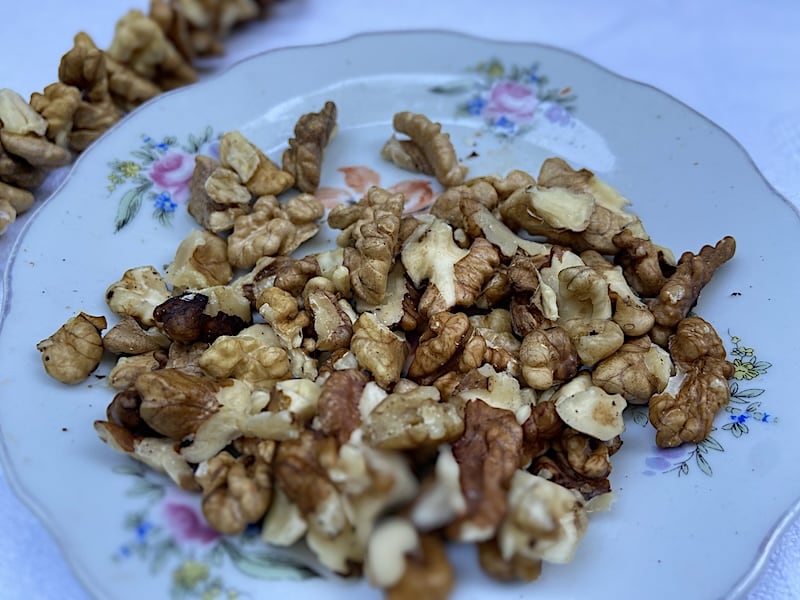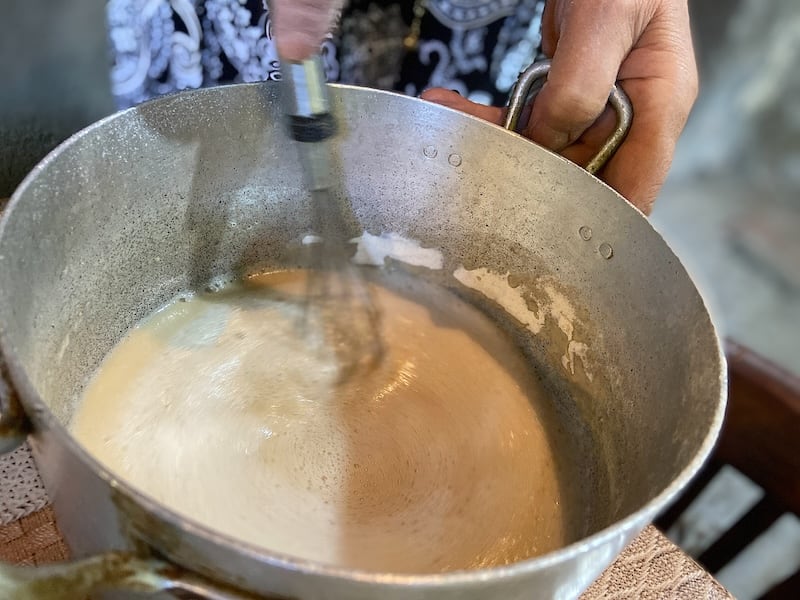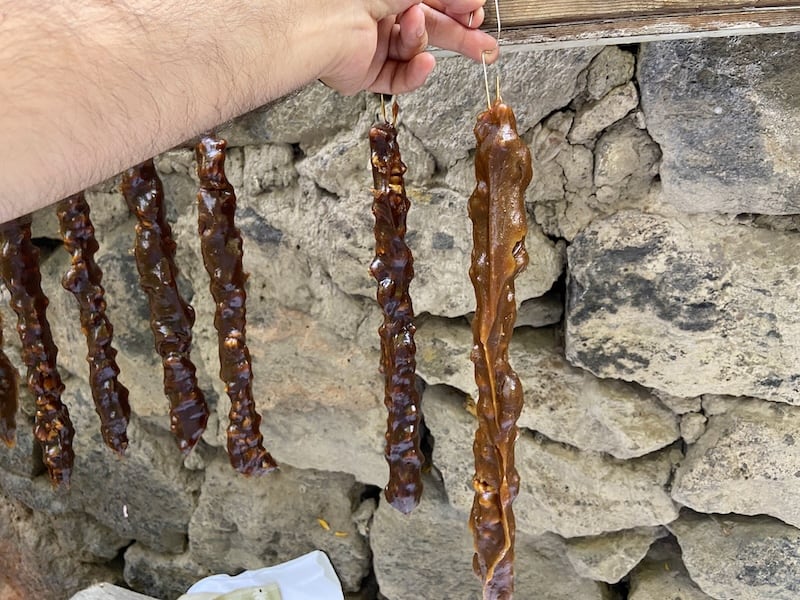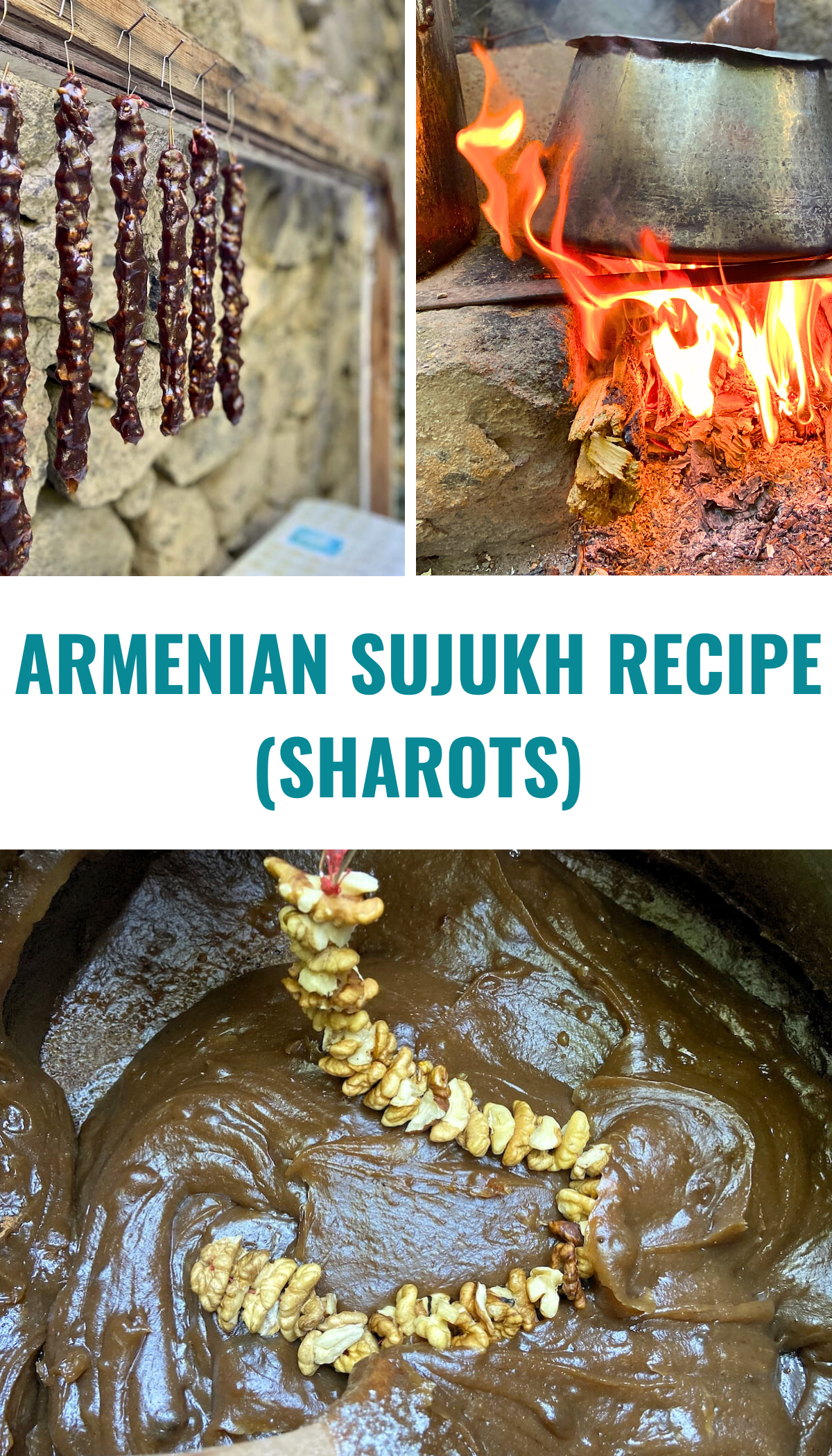Last Updated on June 16, 2025 by Aram Vardanyan
In Armenian culinary culture, which is very old, originally sujukh is known as “Sharots,” which, from a direct translation, means “to line up!”, “to store” or “lay in layers.”
In this article, I will talk about the Armenian Sujukh recipe (sweet sharot) and how to make it step by step and also show how traditional sujukh is made in an Armenian household in Ashtarak.
Sujukh is probably one of the most popular walnut candies in Armenia, also known as Armenian Snickers, and it’s personally my favorite delight made of walnuts, grape molasses, wheat flour, cardamom, clove, and cinnamon that is perfect with bitter coffee.

Sharots is made year-round, however, traditionally it was best made during the New Year and Christmas in Armenia just like stuffed Gahapama pumpkin or Armenian Tolma.
There are other varieties of sharots in different countries like “churchkhela” in Georgia, “jok malban” in Syria, and “shoushoukos” in Greece, but the ingredients and techniques are different.
Armenian Sujukh Recipe (Sweet Sharots) Ingredients
- Walnut halves: 1 kg (approximately 2 lbs)
- Grape juice: 2 liters (approximately 64 oz)
- Molasses: 350 grams (approximately 14 oz), ( the popular option is grape, but you can use other fruits)
- All-purpose flour: 1 ⅔ cups
- Cornstarch: ½ cup
- Sugar: 1-1 ½ cups (you can add more sugar while cooking by preference )
- Ground cinnamon: 1 teaspoon
- Ground clove: 1 teaspoon
- Ground nutmeg: ½ teaspoon
Good to know: There is also an Armenian sujukh recipe that is based on fermented ground lamb beef and spices, and it looks like an Armenian basturma.
How to Make Armenian Sujukh (Sweet Sharots)
In the section below, I will show you step by step how to make Armenian sujukh, based on my experience at Tatoents Qotuk in Ashtarak, a century-old family house winery-tavern. Here, the lovely host Hripsime’s grandmother taught me the Armenian sujukh recipe and how to make it.

She was also a participant in the 2018 Smithsonian Folklife Festival in Washington D.C., where Hripsime was invited as a cook. You can read more about authentic Tatoents Qotuk house in this article.
Sujukh cooking Process
Step 1
You take a whole lot of walnuts, open them gently, and pull out a whole nut, or take a bag of already shelled ones, go through them, and find the non-broken ones. Try not to use too many dry walnuts but use more fresh ones.
Step 2
Take a needle with some thread on it and tie a knot at the bottom. Carefully hold through the walnut slide it to the bottom and keep going. Then tie it to a paper clip on the top because it helps to hang it.


This way you will assemble the walnuts on a string through a needle to get ready to be dipped in the syrup. Make sure you have some fingers protectors while working with needle.
Step 3
In the pot, mix 2 cups of grape juice, a quarter cup of sugar, a pinch of nutmeg, a pinch of cinnamon, a pinch of allspice, and 3/4 cup of grape molasses.
Step 4
Bring it to a simmer. In another bowl, mix around 1/3 cup flour, 1/3 cup cornstarch, and about one cup of water. Whisk this together, which will be your thickener.


Once the mixture is simmering slowly, whisk in your thickener. Put it back on the heat if it’s not thick enough until it’s finally thick.
During my experience, the host was cooking on the fire like in the old days, but of course, you can use a stove to cook sujukh.
Take your walnut and dip it into the mixture. You want it to coat all around, then pull it out. Continue with the rest.
Step 5
Let them hang dry for 3 to 5 days in a cool, dry place. After three days, when they are dry to the touch, you need to snip the bottom and gently pull out the string. Give them a little slice, and your delicious Armenian sujukh is ready. Enjoy!


Pro tip: If you still have leftover cooked mixture, do not throw it away in any case. That’s called “Shpot” in Armenia, and you can eat it when it’s cold, spread it on Armenian lavash bread, or just eat it with a spoon.
More Armenian Food Guides
- Armenian Tolma Recipe
- Traditional Armenian BBQ
- Armenian Ghapama Stuffed Pumpkin Recipe
- Armenian winter dishes
- Vegan and vegetarian food in Yerevan
- Unique Gastro Tours in Armenia

